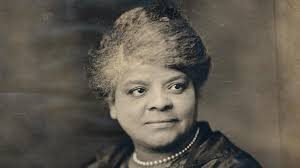Yet who gets remembered — and how — inherently involves judgment. To look back at the obituary archives can, therefore, be a stark lesson in how society valued various achievements and achievers.

Ida B. Wells 1862-1931. Pioneering journalist and activist against lynching.
On March 8, 2018, the New York Times published a special Sunday supplement containing the photographs and beautifully written obituaries of some 15 accomplished women who lived and died in the 19th and 20th centuries. It took me several weeks, but I read every one of these fascinating accounts. The title of the supplement was “Overlooked.”
From Ida B. Wells to Sylvia Plath to Diane Arbus–all the women in the supplement had made a lasting mark on society–one of the key criteria for having an obituary in the Times. Yet the Times did not cover their deaths. Why not?
In 2017, Amisha Padnani, a new digital editor in the Times Obituary section and a woman of color, began to notice that most of the people memorialized in the Times since it began publishing obituaries in 1851 were white men. After several months of research to verify her first impressions, Padnani went to her editor to propose the project that became “Overlooked.” You can find a full account of her initiative here
Many readers know that I have been writing for over five years about institutional empathy and the need for museums to embody it. People often ask about the term “institutional empathy.” How is it different from individual, personal empathy? Can an institution even be empathetic? We use the commonly understood term “empathy” in a metaphorical sense to apply to museums, and we assert that they can indeed stand in the shoes of and be resonant with the communities that they serve. But sometimes an example from another field can be useful in explaining a concept. I think museums can learn from the “Overlooked” project.
On our Empathetic Museum website we propose five characteristics of empathetic practice. I find four of these qualities in “Overlooked.”
Civic Vision: “Overlooked” illustrates civic vision in its understanding that a Times obituary is a civic and cultural marker. Because the Times is known as a “national paper of record,” mention in its Obituary pages is one of the ways in which our society honors individuals. The project acknowledges the lack of respect the Times has shown to women and to people of color in its past practice. There is both an appreciation of civic status and an acknowledgement that the power of civic status has been used historically in a discriminatory manner. Museums similarly need to examine their historic roles in their communities and to acknowledge the ways in which civic status has been used to deny, exclude, and discriminate.
Institutional Body Language: “Overlooked” acknowledges the unspoken insult to generations of highly accomplished people–predominantly women and people of color–that is implied in no notice of their passing. Apparently it took a woman of color to pick up on this powerful message. As museums begin to hire more women and people of color in positions of power, our institutions should become more aware of both subtle and blatant (yet unspoken) exclusionary messages that we communicate through our buildings, board composition, hiring policies, collections, advertising, and programming.
Community Resonance: In her account of the creation of “Overlooked,” Padnani mentions the discussions on race, racism, sexual abuse, and gender equity that have dominated the news in the last several years. She writes, “As an editor at the Times I wondered what I could do to advance the conversation.” This is a question that museums must ask as well, but they can respond authentically only if they have ongoing, deep, and respectful community connections, as does Padnani. She resonates with those who have felt different and excluded, and she has expressed that resonance in a structural, organizational initiative.
Timeliness and Sustainability: In the era of #BlackLivesMatter and #MeToo, “Overlooked” is certainly timely. But the “curators” of this project, Padnani and recently appointed “gender editor” Jessica Bennett, have created a continually expanding interactive website where anyone can fill out a form to nominate someone for a Times obituary. And these nominations are already being published. Thus, the Times has modified a longstanding policy of editors (over the years mostly white men) choosing obituary subjects.
“Overlooked” demonstrates that, through self-examination as well as shifts in personnel, policy, and tradition, the Gray Lady (as the Times is sometimes called) moved toward empathy. Perhaps “Overlooked” will become obsolete. Only time will tell.
Want to learn more about the Empathetic Museum? If you are attending the annual conference of the American Alliance of Museums in Phoenix, AZ, come to our Roundtable at the Maretplace of Ideas on May 7 or our session, The Empathetic Museum: Mission Impossible? on May 9.
If you are reading this in an email and wish to comment, please go to www.museumcommons.com or send me a tweet @gretchjenn. Thanks.